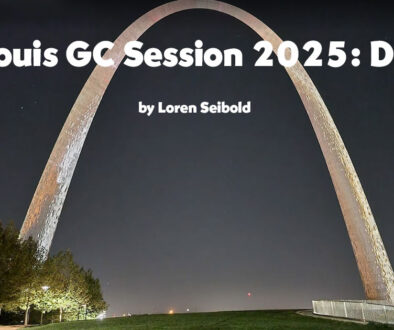A response to “Creation and Evolution: Misunderstood Terms and Concepts”
August 30, 2018 |
This letter is in response to the article entitled “Creation and Evolution: Misunderstood Terms and Concepts” by Erv Taylor, dated 22 August, 2018 that appeared in the August 24, 2018 email issue.
Dr. Taylor’s phrase “biological evolution reflects the simple observation that biological organisms change over time” is not refuted, neither is the divergence of species. However there is a limit on the magnitude of “change over time”. Elephants and giraffes are presumably derived from the same branch of the evolutionary tree of life, yet they require vastly different instructions in the non-coding DNA and the epigenetic code. These instructions are distinct from the media that conducts them and are no more dependent on physics and chemistry than a written message is dependent on ink and paper. Dr. Taylor does not discuss the origin of biologic coding and decoding necessary to produce disparate body plans.
A half century ago Frank Salisbury, an evolutionary biologist, recognized that the system of protein synthesis cannot exist unless the genetic information, transcription, and translation machinery are present at the same time, and unless they both “speak the same language.”
“The link between DNA and the enzyme is a highly complex one, involving RNA and an enzyme for its synthesis on a DNA template; ribosomes; enzymes to activate the amino acids; and transfer-RNA molecules. … How, in the absence of the final enzyme, could selection act upon DNA and all the mechanisms for replicating it? It’s as though everything must happen at once: the entire system must come into being as one unit, or it is worthless. There may well be ways out of this dilemma, but I don’t see them at the moment”. 1
That conundrum persists 50 years later!
Another evolutionary biologist, George C. Williams, noted a disconnect:
“Evolutionary biologists have failed to realize that they work in two more or less incommensurable domains: that of information and that of matter”. Information has no dimensions, no mass, and no charge, and matter has no bytes. “The gene is a package of information, not an object”. 2
In his third example of terms causing misunderstandings Dr. Taylor discusses the problem of conflating Biologic Evolution and Darwinian Evolution. He states in the 7th paragraph of that section: “The point here is that biological evolution — changes in biological entities over time — is a settled reality of the natural world within the contemporary scientific community and among most educated individuals in the West. On the other hand, Darwinian evolution emphasizes a specific set of mechanisms to explain how biologic systems in different organisms undergo changes in their genome, morphology, and/or function over time”.
The question: “Is the mechanism of natural selection sufficient to explain the major changes in biological forms observed in the paleontological record?” is a reasonable one from a scientific point of view. Other mechanisms that result in changes in gene frequencies are known. Are there still other physical, biophysical, or biochemical mechanisms or sets of mechanisms which can be shown to better explain the changes observed in the fossil record? Or should biological evolution be better viewed as a process reflecting a number of additional processes, some genetic, and some not? This expanded view of biological evolutionary dynamics is currently being discussed within some mainline biological research circles.”
Natural selection has no creative power and should be questioned by the scientific community. Two biologists writing in the Annual Review of Genomics and Human Genetics have expressed their skepticism:
“It remains a mystery how the undirected process of mutation, combined with natural selection, has resulted in the creation of thousands of new proteins with extraordinarily diverse and well optimized functions”. 3
Eric Davidson, an evolutionary biologist from the California Institute of Technology, and one of the leading scientists in the field of evolutionary development (evo-devo) states that:
“Contrary to classical evolution theory, the processes that drive the small changes observed as species diverge cannot be taken as models for the evolution of body plans in animals”.
He further states,
“Neo-Darwinian evolution…. assumes that all process works the same way, so that evolution of enzymes or flower colors can be used as current proxies for study of evolution of the body plan. It erroneously assumes that change in protein binding-coding sequence is the basic cause of change in developmental program; and it erroneously assumes that evolutionary change in body-plan morphology occurs by a continuous process. All of these assumptions are basically counterfactual. This is not surprising, since the neo-Darwinian synthesis from which these ideas stem was a pre molecular biology concoction focused on population genetics and…. natural history, neither of which have any direct mechanistic import for the genomic regulatory systems that drive embryonic development of the body plan”. 4
Davidson has identified Developmental Gene Regulatory Networks (dGRN) in the non-coding DNA that are best described as complex circuit boards that switch many genes off and on. He describes it this way:
“There is always an observable consequence if a dGRN sub circuit is interrupted. Since these consequences are always catastrophically bad, flexibility is minimal, and since the sub circuits are all interconnected, the whole network partakes of the quality that there is only one way for things to work. And indeed the embryos of each species develop in only one way”. 5
Dr. Taylor writes in his second paragraph of Problem #3: “It would seem that just the phrase biological evolution would not be considered problematic unless someone insists that the genetic structures of biological populations do not change over time. Such a counterfactual statement can be dismissed without any further serious consideration”.
Yes, genetic structures of biological populations change over time, but despite over 100 years of morphogenetic experiments scientists have been unsuccessful in mutating from one body plan to another. The source of biologic coding remains a mystery for science and the evolution of body plans is a goal not yet obtained.
Dr. Davidson recognizes this in the following words:
“Thus, how evolution of the animal body plan has occurred is a question that in the end can only be addressed in the terms of transcriptional regulatory systems biology”. 6
Body plans are the “elephant in the room”.
The controversy is not over whether or not biological populations change over time, but rather, the extrapolation of the mechanism of those changes to the development of disparate body plans. Natural selection has no creative power and the “other physical, biophysical, or biochemical mechanisms or sets of mechanisms” that produce coding changes are trivial compared to the coding changes in non-coding DNA and epigenetic coding necessary to produce disparate body plans.
Dr. Taylor, in his preliminary comments says:
“I am not aware of any discovery of new information concerning how some defined physical system of any type functions as a result of the application of an approach developed by any Young Earth (YEC) or Young Life Creationist (YLC) oriented researcher. The same observation can be made about the lack of a track record of anyone supporting an Intelligent Design (ID) manner of thinking”.
There is no need for concern over intelligent design because when science discovers the natural mechanism for biologic coding and epigenetic coding intelligent design will die a natural death.
George Grames, gmgrames@gmail.com
- Frank B. Salisbury, “Doubts about the Modern Synthetic Theory of Evolution”, American Biology Teacher, vol 33 no. 6: p 338, September 1971.
- George C. Williams, “A Package of Information”, from The Third Culture: Beyond the Scientific Revolution, edited by John Brockman (Simon and Schuster, 1995), p 42-43.
- Joseph W. Thornton and Rob DeSalle, “Gene Family Evolution and Homology: Genomics Meets Phylogenetics,” Annual Review of Genomics and Human Genetics, 1: p 64, 2000.
- Davidson, “Evolutionary Bioscience as Regulatory Systems Biology”, Developmental Biology, vol 357, Issue 1, September 1, 2011, p 35.
- Davidson, “Evolutionary Bioscience as Regulatory Systems Biology”, Developmental Biology, vol 357, Issue 1, September 1, 2011, p 38.
- Davidson, “Evolutionary Bioscience as Regulatory Systems Biology”, Developmental Biology, vol 357, Issue 1, September 1, 2011, p 40.




